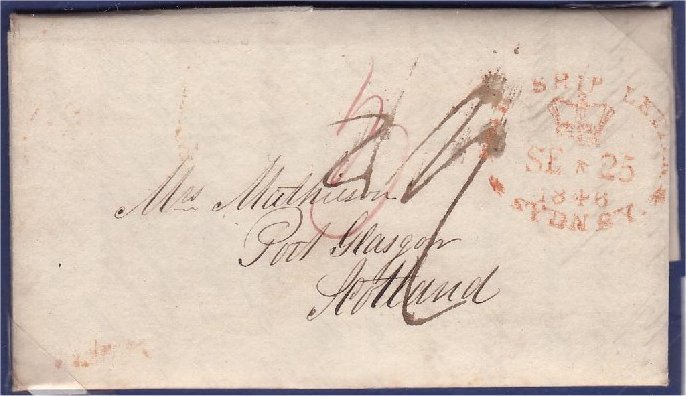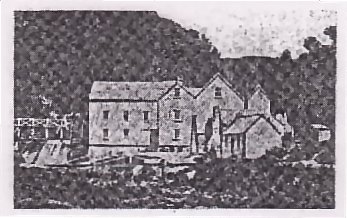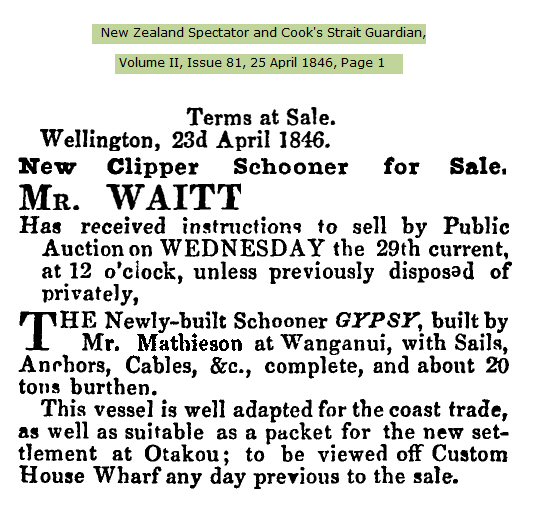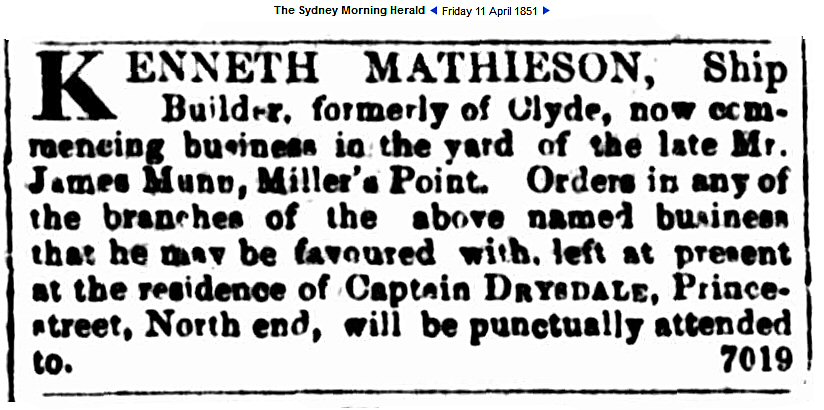
A stampless entire, endorsed "Annatam, New Hebrides 11 June 1846". The writer, Kenneth Mathieson, was a passenger on Alfred, a 123 ton barque which had left Port Nicholson, NZ on 14 May 1846, for Hong Kong. When it reached the New Hebrides, it called at James Paddon's station on Inyeug islet in Anelgauhat harbour on the island of Aneityum. On this remote island (Rev. Geddie of the London Missionary Society would not settle there for another two years), Paddon had established a successful trading station which he advertised in the newspaper in Sydney and elsewhere. It was so civilised it even boasted a library. While at Paddon's station, Mathieson wrote this letter to his mother. It was carried from Aneityum by private ship - the Avon (Lewis), a barque of 256 tons, which arrived in Sydney on 6 July 1846. It was rated 3d to Sydney (the inwards private ship letter rate) and franked with the red "PAID SHIP LETTER, SYDNEY" (Orchard Type 57). From there, it was carried via Liverpool and was rated a further 1/3 (the 4d 'India Letter' rate under 3oz, plus 11d inland to Glasgow). On arrival, it was receipted "PORTGLASGOW SHIPLETTER" (Billig Type 1266), dated March [1847]. |
 |
11 June 1846 |
The author of the letter, Kenneth Mathieson came from Port Glasgow where he was born on 23 April 1811 to Donald Mathieson and Janet Lockhart. Aged 30, he arrived in Wellington on 11 October 1841 as master of his own 236 ton barque Clydeside, an early charter of Edward Gibbon Wakefield's New Zealand Company, bringing 14 passengers, having departed from Greenock on her maiden voyage on 28 April 1841 and calling at Adelaide on the way. Mathieson's brother Robert, who had captained Clydeside to that point, was dropped off at Adelaide. Kenneth settled at Kaiwharawhara where, by November 1842, he had built a slipway to repair damage to Clydeside, caused when she had drifted onto rocks. The slip was so successful that he leased it out for the repair of other vessels (including the 400 ton Indemnity). He owned four sections and some plots at Wanganui, all purchased from the New Zealand Company, as well as a flour mill at Kaiwharawhara (in partnership with one Schultz) and served as a 'reserve' trooper for the Wellington district. In 1843, Mathieson made a voyage back to the United Kingdom in Clydeside. He must have experienced financial difficulties there because Clydeside was put up for sale on the order of the High Court of the Admiralty in the first half of 1844. Presumably, he was able to make satisfactory arrangements with his creditors because he returned again to New Zealand in Clydeside in 1844, with further emigrants. In 1846, he built a 38.8', 15-20 ton vessel, Gypsy, in Wanganui financed by one Alexander Alexander and one George Moore. In the letter, he talks of cutting down trees himself, to mill the timber to build the ship. He sailed Gypsy to Wellington, and recounts almost being wrecked in bad weather on the way. Gypsy was registered as No. 1 of 1846 in the Port of Wellington Registry. By April, Mathieson was in financial difficulties because two large creditors had defaulted on bills to him. He sold Gypsy (later to be wrecked off Cape Turnagain on 16 August 1849 when her master, Captain Thompson, ran her ashore in a gale), and pledged his assets to his unsecured creditors, to try to protect them from his bank, to which he had defaulted. He "embarked for China" on 14 May 1846, on the Alfred (Napper). It had reached Aneityum by the date of this letter, 11 June 1846. Three years later, the Alfred (by then owned by Paddon himself) would be wrecked on the reefs of Anelgauhat harbour, on 16 March 1849. The letter suggests Mathieson was headed for Hong Kong or Singapore, but if he stopped in either place he did not stay long. By 1847, he was back in Wellington, entering into a settlement with the New Zealand Company (which had sold him land to which it had no entitlement - a common feature of its dealings) and he settled in the little village of Waiwhetu at the northern head of the Wellington harbour, where he established a shipbuilding yard on the banks of the Waiwhetu stream. In 1848 Mathieson built the last ship of which we know for certain, a 62', 45 ton schooner, Queen for the Hon. John Johnson, a merchant of Lambton Quay, Wellington, registered as No. 5 of 1848. Queen (Storey), was later wrecked at Poverty Bay in September 1850, when the wind shifted unexpectedly to the south east. The shipbuilding business did not last because, in 1848/1849, the river silted up. Mathieson left New Zealand in 1850 and went to Geelong, near Melbourne, Australia, where his brother Robert was living. There are 1853/1854 advertisements in the 'Missing Friends' column of The Argus, the Melbourne newspaper, inserted by the post office, notifying them of the arrival of mail from Port Glasgow. |

Mathieson's flour mill
at Kaiwharawhara in 1857.

Port Glasgow receiving cancel
on reverse, March [1847].



